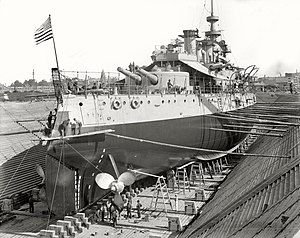imo this discussion about building 50-60 055s over the next 20 years has some sensible reasoning and big blindspots on both sides of the argument.
I personally do not expect the Navy to need quite that many 055s (i.e.: including variants of 055 I assume) over the next 20 years, and while I agree that such a number should definitely not be thrown around as if it is assumed to be going to happen, I also think that at this stage it is yet so unrealistic.
These sort of predictions are always dependent upon extrapolating from past/current trends, into the future. At the moment, 055 production has only really just begun, and we don't know if the rate of production will be sustained, and we don't know how much of the 055's potential required numbers have been fulfilled based on the current 4 confirmed hulls.
It might turn out that the navy will only build 4 hulls initially and take a few years off before ordering some more, which would cause our predictions to be lower. Or the navy might continue building at JNCX and DL at the rate they've been doing into the future, with 8 ships in the first batch. Or, some of the previous rumours about HPLX building 055 might come to fruition and we might see three shipyards building 055s at the same time, causing our predictions to be much higher.
Other factors, like the future growth rate of the chinese economy, and the state of what China's geopolitical/naval ambitions will be, are also not guaranteed to enable a 50-60 055 production run over two decades to work out.
But otoh, 50-60 055s over 20 years is 2.5-3 055s commissioned per year, and while that is on the higher end of the commissioning rate and the higher end of the length of sustained continuous production, I don't think it is pie in the sky unrealistic either, given we are still in the very early stage of tracking 055's production trajectory and it's hard to track where it may go.
So IMO such a prospect should definitely be treated with a lot of caution, but at the same time it shouldn't just be laughed off.
In a couple of years we may have a better picture of current (of the time) 055's production rate and the future production trajectory based on it.
Well, how many high-end destroyers are needed for the 1st island chain?
How many would be needed for the 2nd island chain in 15-30 years time?
On the second question, I get a minimum of 90.
---
It doesn't make sense to split an initial order of 4x Type-55 against 2 shipyards.
If they want to validate the design, why not just build 4 from Jiangnan?
It would only take another year to launch the extra 2 ships, plus the cost will be a lot lower because of the learning curve, and it provides for extra time to evaluate the design and then incorporate improvements into the later ships.
And it's not like there is an urgent requirement for the Type-55 over the Type-52D, because the delay is only 1 year for the following 2 ships and we're not talking about a revolutionary increase or need for that capability
And we could have Dalian continue with Type-52D which is now proven.
So that is why I conclude the initial Type-55 production run for the next few years will be a lot bigger. But then they might as well continue building 3 destroyers per year like they are already doing.



